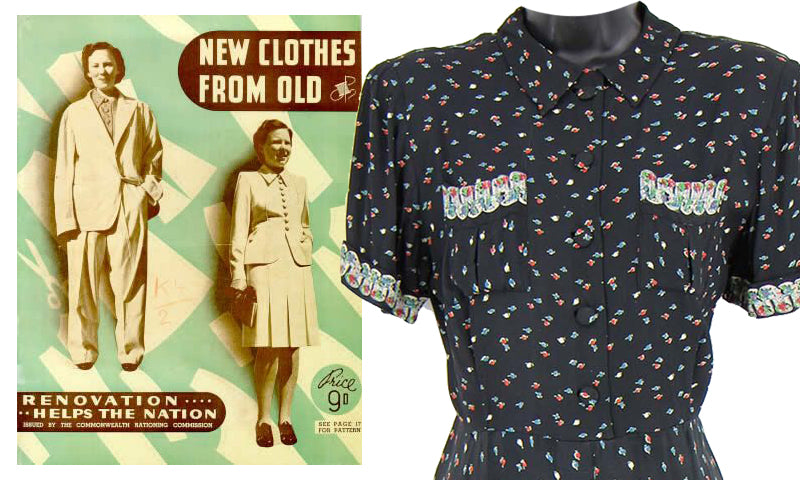
During the Second World War, Britain was very short on supplies. The German Navy had flooded the Atlantic Ocean with submarines and had begun to sink any Allied shipping vessel or naval craft bringing supplies to Britain and Ireland. Food, fuel and fabric were all rationed, with the average family having to think outside of the box to keep above the breadline. In 1941, the Board of Trade backed the idea of ‘utility clothing’. The idea was that with the production and sale of clothing controlled by the government, the amount of material used in the manufacturing would be drastically decreased, saving more for the war effort.

Rationing
As you well know, everything in the war was rationed. The way this worked is that civilians were issued a ration book. A ration book was a way of determining how much of each item someone was allowed. This included everything from petrol and gas to fish and fruit. Rationing began in 1941 and ended in1949.
Utility Clothing
Utility Clothing was introduced in 1941 and laid out very strict rules for tailors and clothiers to adhere to. For a start, double-breasted suits were ruled out. The amount of cotton used in the manufacture of a double-breasted was far to excessive when there was the option of a single breasted suiting available.
Next, certain specific alterations were also stopped. Among these was the turn-up on a pair of trousers. This was an extremely unpopular decision, as turn-ups were extremely fashionable at the time. However, as with most things in wartime, ingenuity took hold. Men started buying trousers that were too long for them and had them altered at home, so they could still have this turn-up style.
As for the ladies, things weren’t easy either. Women were still expected to look their best. As the war progressed there was a huge lack of nylon stockings, and so to make it look as though they still had them on some women draw lines on the backs of their legs to simulate the seam of the stocking. From a distance, this looked like it the real thing, and it wasn’t until American servicemen arrived in Britain in 1942 that they were finally able to get hold of the real thing.

Lots of women also began to make their own clothes. As well as rations for clothing, the ladies also received a ration for fabric and dressmaking materials. Lots of women also made use of old clothing. When the men went off to war, their old clothes were repurposed and used to make new items. The ‘make do and mend’ movement helped the people of Britain keep striving for new fashions even in the time of war.
It is estimated that during the war, utility clothing managed to save 4.5 million square yards of cotton, which was used to make the uniforms and battle dress our armed forces fought in.
After the war, those conscripted into the armed forces were demobilised and released from military service. After handing over their uniforms, the men were given what was known as a ‘demob suit’. This was typically a double-breasted suit with a waistcoat. They were also given a hat and a pair of shoes. Although there was some variation in the type of suit issued, they were generally of very good quality and of simple fabric.
After the end of rationing, people didn't forget the lessons they learned in wartime. Mother still repaired and reused clothing. Men still asked their wives to alter their trousers and people still made the best of what they had. It's a spirit I think everyone in Britain is familiar with and it all started with the spirit of the war.



























